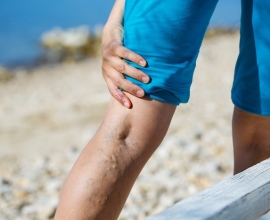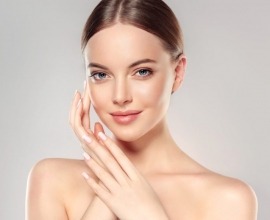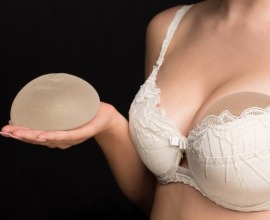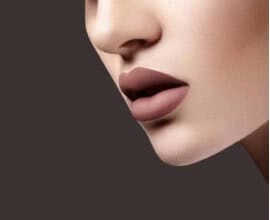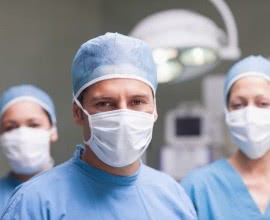What are Varicose Veins?
Our circulatory systems transport oxygen and nutrients throughout the entire body, and we all know that the heart does the heavy work of pumping the freshly oxygenated blood out from our lungs to the limbs. However, the heart is not strong enough to complete a full circulation around the body on its own.
Inside our veins there exist tiny valves that expand to allow blood to traverse through, then these valves close to prevent back flow. When the walls of our veins over-stretch or lose elasticity, those tiny valves weaken and lose functionality. What happens is that blood begins to flow backwards and pool, typically around the knees and ankles. Swollen varicose veins is a disease of our generation and can severely inhibit mobility in our later years, so catch it quickly before it may be too late.[1]
Risk factors
Jumping to the chase, here are the top contributors to increased risk of developing varicose veins:
-
being female
-
having a family history of varicose veins
-
growing older in age
-
being overweight
-
having a job that involves long periods of standing
-
having a job that involves long periods of inactivity (desk work)
-
being pregnant
-
having had a previous blood clot
-
having a pelvic tumor and swelling
-
being born with abnormal blood vessels [2]
Increased pressure and hormones
Certain factors like pregnancy and obesity increase blood pressure on your veins. During pregnancy, for example, the amount of blood in circulation increases in order to aid the development of the baby. While beneficial for the child, it puts extra strain on those tiny valves and expands your veins overall. Additionally, increased hormone levels during pregnancy even facilitate this change by making the muscular walls of the blood vessels relax.[3]
When we gain weight, our heart and veins do heavier work to maintain circulatory equilibrium. Increased masses of fatty tissue cause bulging, which means more blood must try to flow through the veins with every pump of the heart. As muscles need more oxygen to move a heavier body, the load on the heart has already increased by this point and, unfortunately, it may start to overcompensate for veins that could possibly already be compromised.[4]
Losing weight should decrease the overall pressure on your heart, veins and those tiny valves, but significant damage has already been done. Losing weight is most of the battle, but also seeking out treatment for your veins will be your next step to restore the health of your circulatory system.
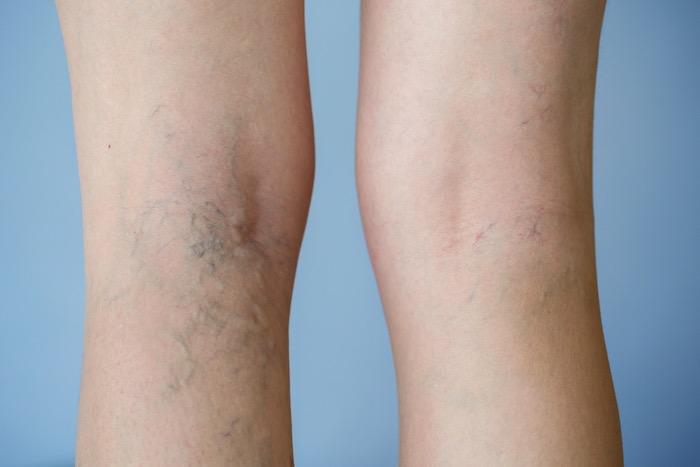
A proactive way to promote vascular elasticity
While you should still discuss in detail your health status with a doctor, careful sauna use paired with cool bathing could promote healthy dilation and contraction of the veins. You can think of it like “targeted exercise” for the veins, but do make sure to cover trouble areas with a cold, damp cloth while in the sauna and cool down your legs thoroughly as soon as you exit.[5]
Key words: varicose veins, vascular system, veins, blood pressure, sauna, varicose treatment, vein disease
[1] “Varicose Veins Causes.” NHS, United Kingdom National Health Service, 7 May 2020, www.nhs.uk/conditions/varicose-veins/causes/.
[2] Ibid.
[3] Ibid.
[4] “Overweight? Varicose Veins are a Common Side Effect.” Tri-City Cardiology, Tri-City Cardiology, 23 Feb. 2016, www.tricitycardiology.com/overweight-varicose-veins-are-a-common-side-ef....
[5] “Can I Use the Sauna If I Have Problems with Varicose Veins or Other Vein Disorders?” KLAFS, KLAFS, www.klafs.com/health/faq-for-well-being/varicose-veins.html.

